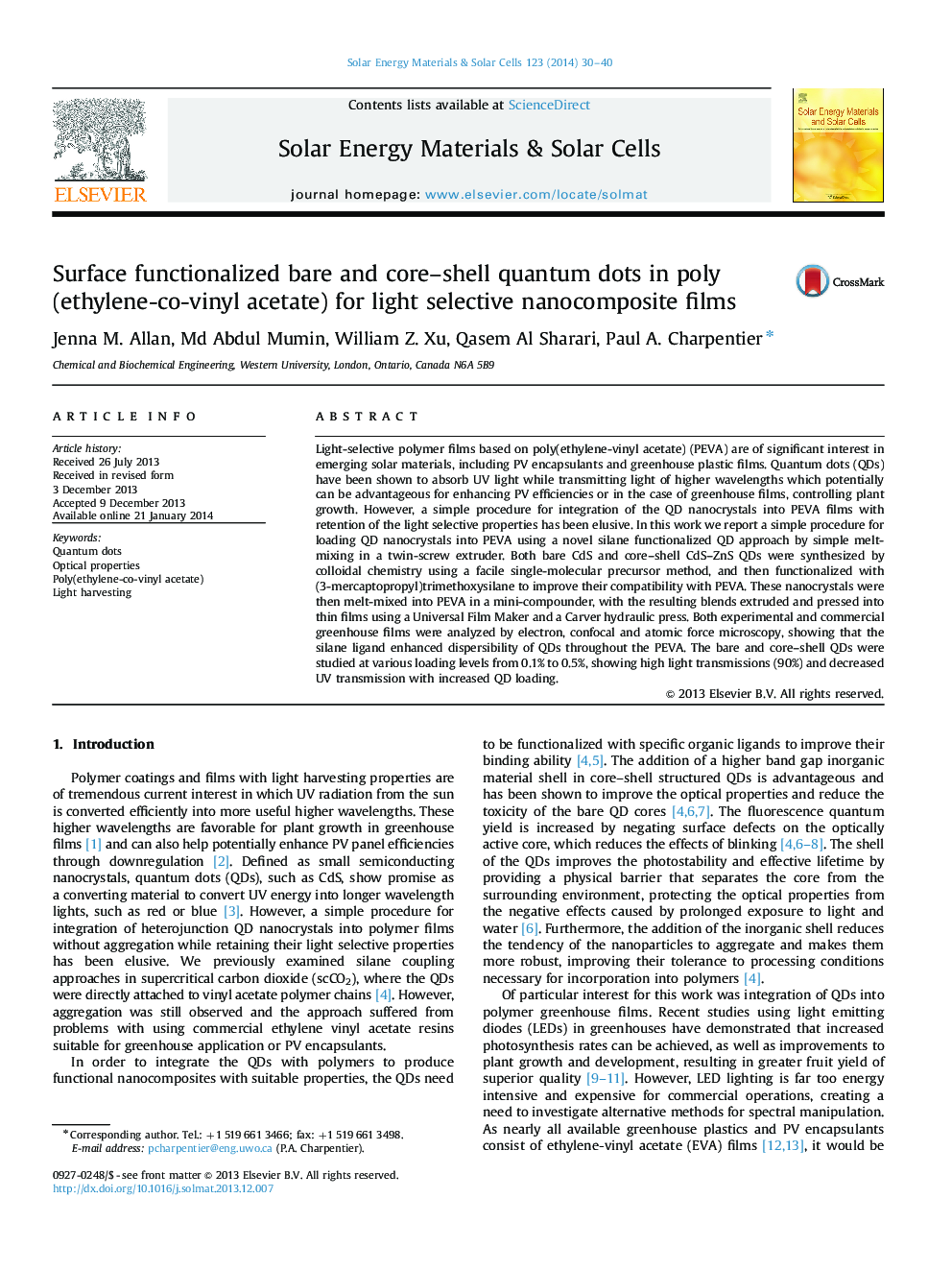| کد مقاله | کد نشریه | سال انتشار | مقاله انگلیسی | نسخه تمام متن |
|---|---|---|---|---|
| 78044 | 49315 | 2014 | 11 صفحه PDF | دانلود رایگان |
• High quality core CdS and core–shell CdS–ZnS quantum dots were functionalized with (3-mercaptopropyl)trimethoxysilane.
• Silane functionalized QDs were melt-mixed in a twin screw extruder with commercial poly(ethylene-vinyl acetate) (PEVA) resins.
• Electron, optical and atomic force microscopy (AFM) showed that the silane ligand enhanced dispersibility of QDs throughout the PEVA films.
• Quantum dot loadings from 0.1% to 0.5% gave high light transmissions (90%) and decreased UV transmission with increased QD loading.
Light-selective polymer films based on poly(ethylene-vinyl acetate) (PEVA) are of significant interest in emerging solar materials, including PV encapsulants and greenhouse plastic films. Quantum dots (QDs) have been shown to absorb UV light while transmitting light of higher wavelengths which potentially can be advantageous for enhancing PV efficiencies or in the case of greenhouse films, controlling plant growth. However, a simple procedure for integration of the QD nanocrystals into PEVA films with retention of the light selective properties has been elusive. In this work we report a simple procedure for loading QD nanocrystals into PEVA using a novel silane functionalized QD approach by simple melt-mixing in a twin-screw extruder. Both bare CdS and core–shell CdS–ZnS QDs were synthesized by colloidal chemistry using a facile single-molecular precursor method, and then functionalized with (3-mercaptopropyl)trimethoxysilane to improve their compatibility with PEVA. These nanocrystals were then melt-mixed into PEVA in a mini-compounder, with the resulting blends extruded and pressed into thin films using a Universal Film Maker and a Carver hydraulic press. Both experimental and commercial greenhouse films were analyzed by electron, confocal and atomic force microscopy, showing that the silane ligand enhanced dispersibility of QDs throughout the PEVA. The bare and core–shell QDs were studied at various loading levels from 0.1% to 0.5%, showing high light transmissions (90%) and decreased UV transmission with increased QD loading.
Journal: Solar Energy Materials and Solar Cells - Volume 123, April 2014, Pages 30–40
